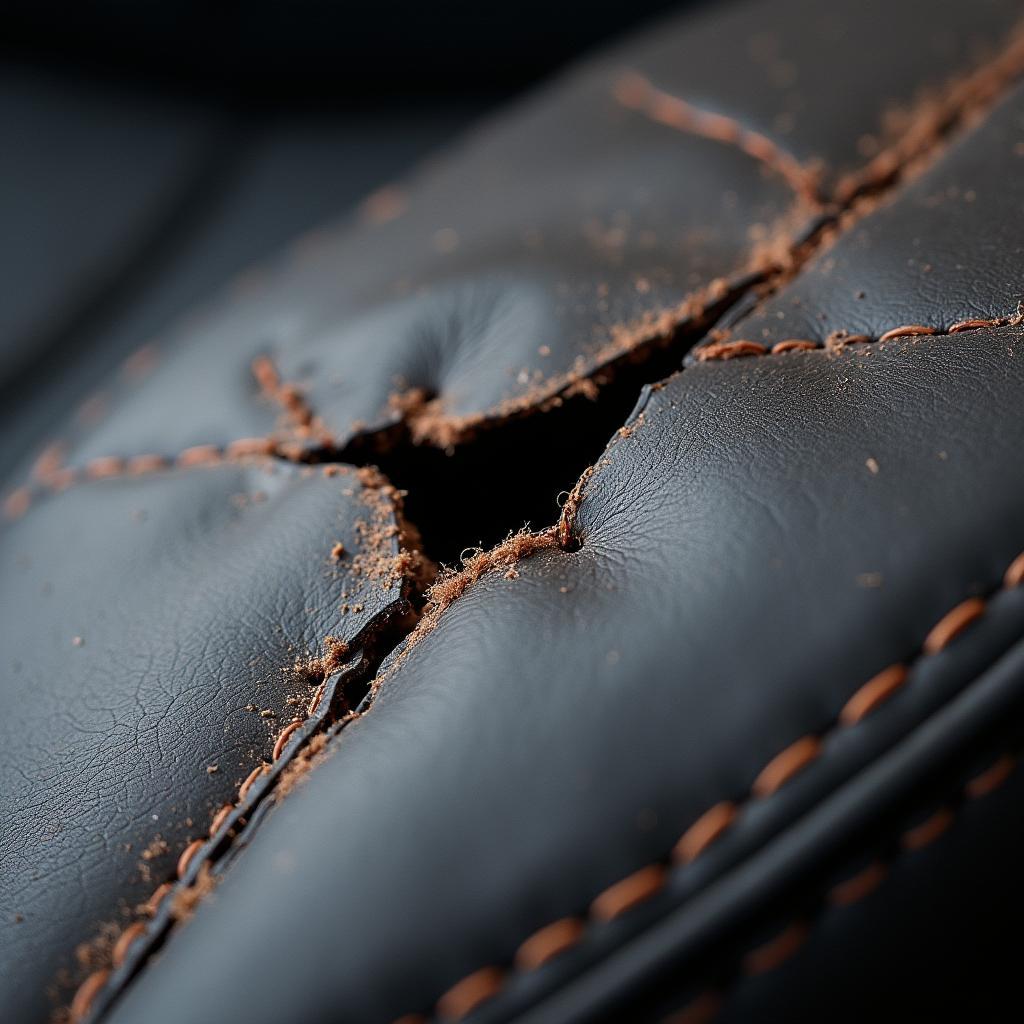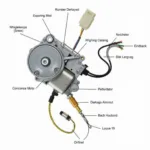Leather car seats are a luxurious feature but can be prone to rips, tears, and cracks over time. While a significant rip might require professional attention, minor damages can often be repaired at home with the right tools and techniques. This comprehensive guide will walk you through the process of repairing ripped leather car seats, helping you restore their pristine appearance and extend their lifespan.
Understanding Leather Damage and Repair Options
Before diving into the repair process, it’s crucial to assess the severity of the damage. Small cracks and scratches can often be addressed with simple leather conditioners and dyes. However, deeper rips and tears require more involved solutions like liquid leather filler or patching.
Gather Your Materials
For a successful DIY leather car seat repair, you will need:
- Cleaning Supplies: Leather cleaner, microfiber cloths, rubbing alcohol
- Repair Materials: Liquid leather filler, leather adhesive, leather patches (if needed)
- Color Matching: Leather dye (if needed), color matching kit
- Tools: Palette knife, sandpaper (various grits), scissors, heat gun or hairdryer, masking tape
Step-by-Step Guide to Repairing Ripped Leather Car Seats
- Clean the Area: Thoroughly clean the damaged area and surrounding leather with a dedicated leather cleaner. Use rubbing alcohol to remove any remaining dirt or grease.
- Assess and Prepare the Rip: If the rip has loose threads, carefully trim them with scissors. Use fine-grit sandpaper to smoothen the edges of the tear for better adhesion.
- Apply Liquid Leather Filler: Using a palette knife, apply thin layers of liquid leather filler to the rip, allowing each layer to dry completely before applying the next.
- Sand and Shape: Once the filler is dry, sand the area with progressively finer-grit sandpaper until it’s flush with the surrounding leather surface.
- Patching (If Necessary): For larger rips, cut a leather patch slightly larger than the damaged area. Apply leather adhesive to the back of the patch and carefully place it over the rip, ensuring a smooth finish.
- Color Matching and Dyeing: If the repair is noticeable, use a leather dye that matches your car’s interior color. Apply the dye in thin, even coats, allowing each layer to dry completely.
- Heat Setting (Optional): To enhance the bond and durability of the repair, use a heat gun or hairdryer on a low setting to heat the repaired area gently.
Tips from a Car Repair Expert
“Remember, patience is key when repairing leather car seats,” says John Miller, a veteran car upholstery expert with over 20 years of experience. “Take your time with each step, and don’t be afraid to repeat the process if necessary to achieve a professional-looking result.”
Preventing Future Damage
Once you’ve successfully repaired your leather car seats, it’s essential to protect them from future damage. Consider using leather conditioners regularly to keep the material supple and prevent cracking. Additionally, avoid exposing your car to extreme temperatures and direct sunlight for extended periods.
Conclusion
Repairing ripped leather car seats is achievable with the right approach and a little patience. By following the steps outlined in this guide, you can restore your car’s interior to its former glory and prolong the life of your leather seats.
FAQs
Q: Can I use super glue to repair a ripped leather car seat?
A: Super glue is not recommended for leather repair as it can create a stiff, inflexible bond that is prone to cracking over time.
Q: How long does it take for liquid leather filler to dry completely?
A: Drying times vary depending on the product and environmental conditions, but it typically takes 24-48 hours for liquid leather filler to cure completely.
Q: Where can I find leather dye that matches my car’s interior color?
A: Most auto parts stores offer a wide selection of leather dyes. You can also find color-matching kits that allow you to mix and match the perfect shade.
Q: How often should I condition my leather car seats?
A: It’s generally recommended to condition leather car seats every three months or as needed, depending on usage and environmental conditions.
Q: Can I prevent leather car seats from cracking in hot weather?
A: Parking your car in the shade and using a windshield sunshade can help minimize heat damage to your leather seats during hot weather.
Still, have questions or need assistance with your car repair needs? Don’t hesitate to reach out to our expert team via WhatsApp: +1(641)206-8880 or Email: [email protected]. We’re available 24/7 to provide you with the guidance and support you need.



